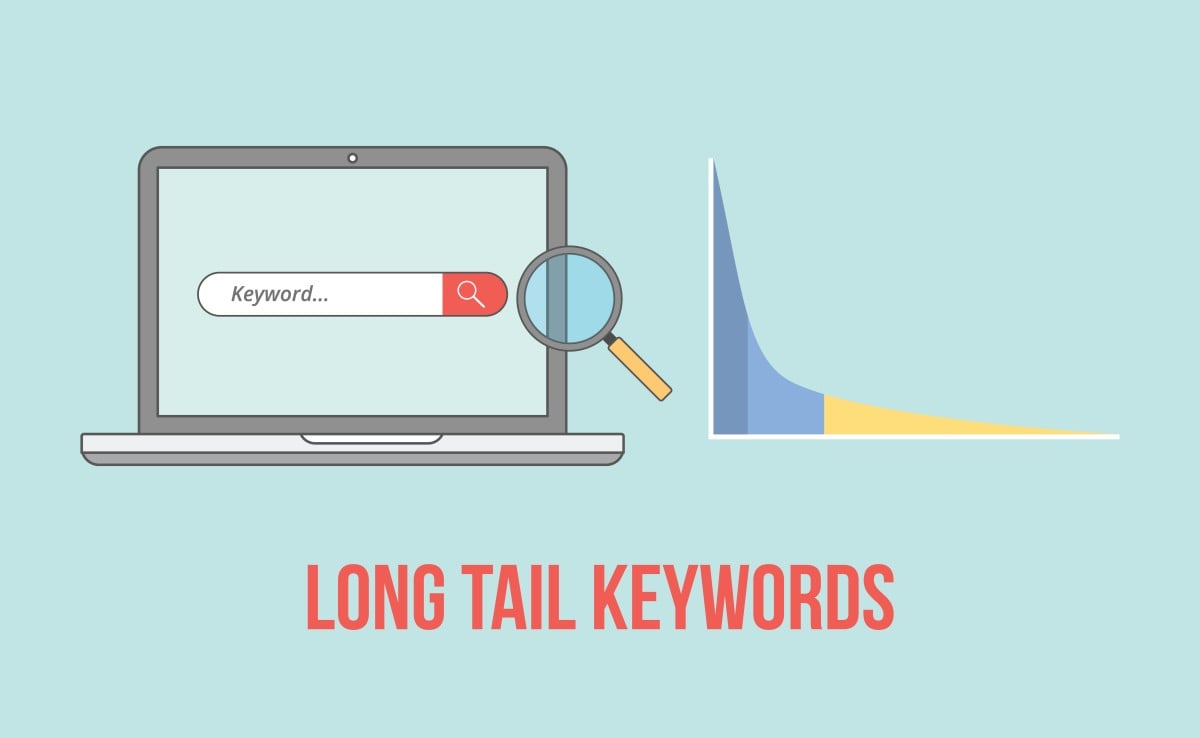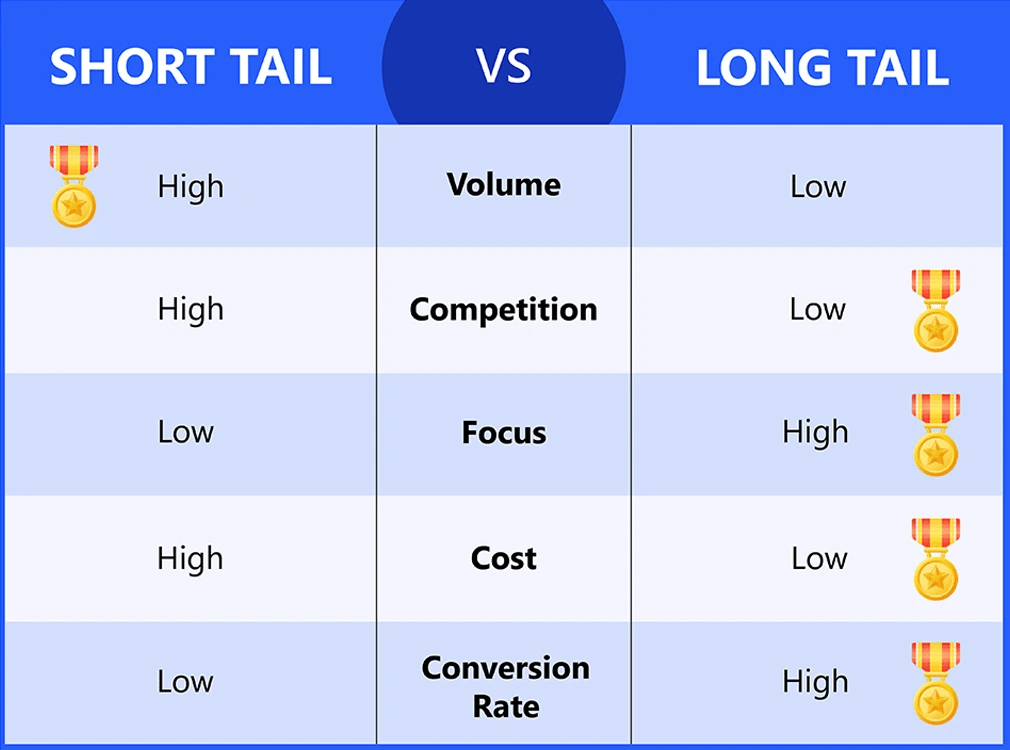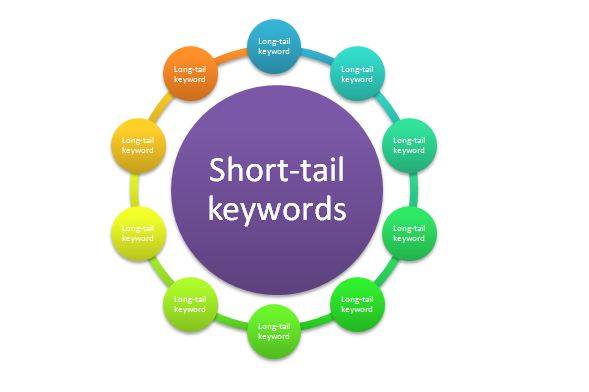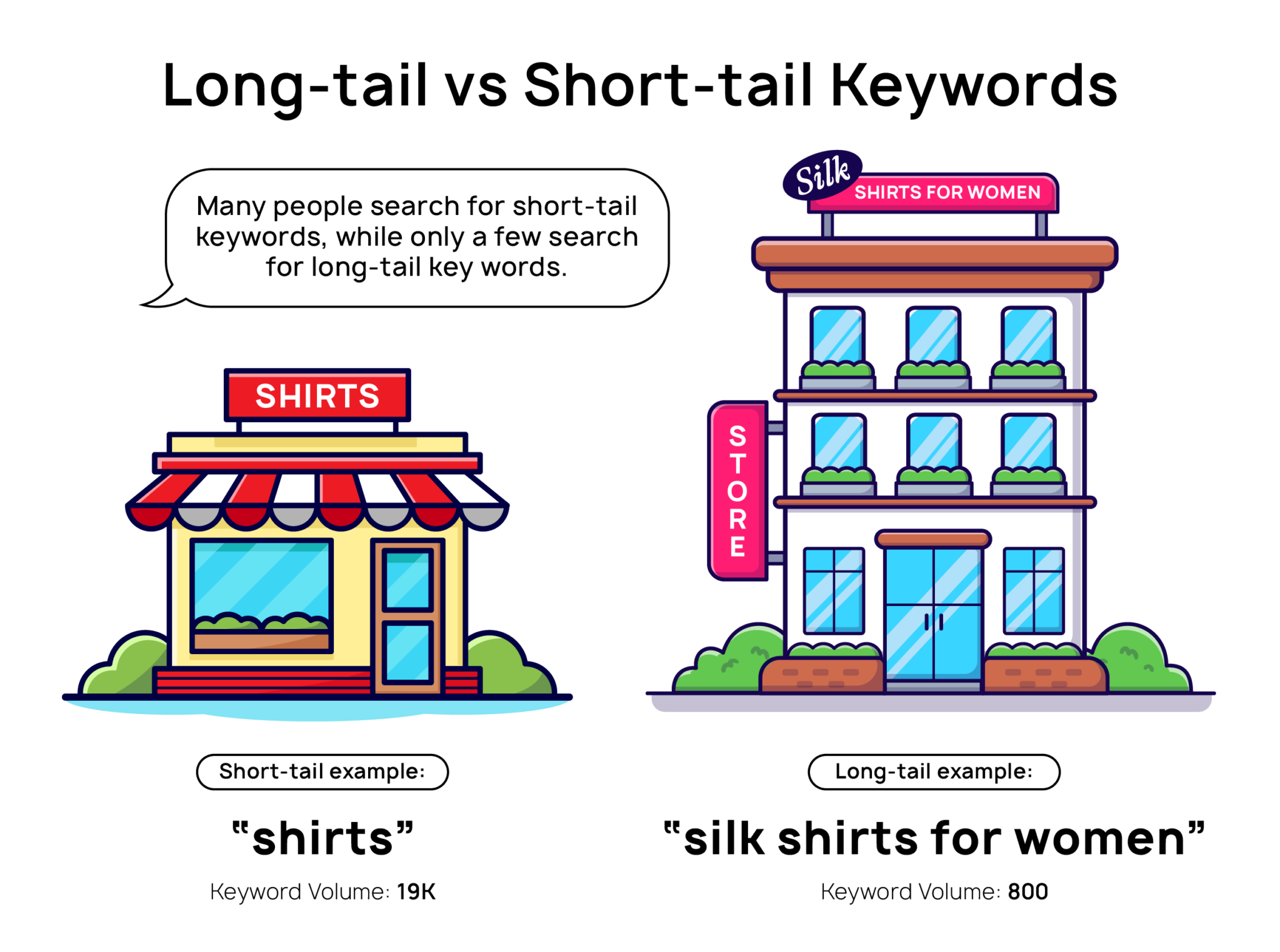Introduction
Long Tail Keywords Vs Short Tail Keywords, Selecting the right keywords is one of the most important steps in crafting an SEO strategy. Keywords determine how easily users can find your website through search engines like Google. However, not all keywords are created equal—marketers often grapple with choosing between long tail keywords and short tail keywords.
Each type serves a unique purpose: short tail keywords are broad and competitive, while long tail keywords are more specific and focused. This article delves into the differences, advantages, and best use cases for both keyword types, helping you decide which one aligns with your SEO objectives.
What are Short Tail Keywords?
Short tail keywords—also called broad keywords—are general search phrases consisting of one to three words. These keywords typically cover a wide topic and attract a large volume of search traffic, but they also face high competition. When planning your digital advertising strategy, it’s essential to understand the differences between platforms. Comparing Bing Ads and Google Ads can help you determine the right fit for your business.
Characteristics of Short Tail Keywords
- Usually 1-3 words long
- High search volume
- High competition
- Broad intent (often unclear)
- Lower conversion rates
Examples of Short Tail Keywords
- “Shoes”
- “Digital marketing”
- “Best laptops”
Short tail keywords bring significant visibility but can be challenging for new websites due to their competitiveness. A user searching for a short tail keyword may have a wide range of intentions, making it harder to create content that matches user needs precisely.
What are Short Tail Keywords?
Long tail keywords are more specific search phrases that contain four or more words. These keywords usually represent targeted user intent, making them highly effective for driving qualified traffic. While they attract lower search volume than short tail keywords, they tend to have higher conversion rates.
Characteristics of Long Tail Keywords
- 4+ words in length
- Lower search volume
- Low competition
- Specific intent
- Higher conversion rates
Examples of Long Tail Keywords
- “Comfortable running shoes for flat feet”
- “Best digital marketing courses for beginners”
- “Affordable gaming laptops under $1000”
Long tail keywords help narrow down the audience, allowing businesses to target specific user needs. They’re particularly valuable for niche websites or eCommerce businesses looking to reach potential buyers who are further along in the purchase journey.
Key Differences Between Long Tail and Short Tail Keywords
| Feature | Short Tail Keywords | Long Tail Keywords |
|---|---|---|
| Length | 1-3 words | 4+ words |
| Search Volume | High | Low |
| Competition | High | Low |
| Intent | Broad (less specific) | Narrow (more specific) |
| Conversion Rate | Low | High |
| SEO Difficulty | High | Easier to rank for |
These differences indicate that short tail keywords are ideal for building brand awareness, while long tail keywords are more suitable for conversion-focused campaigns.
When to Use Short Tail Keywords
Short tail keywords can be beneficial when the goal is to attract a large audience and increase brand visibility. They are ideal for companies with:
- Established authority and high domain strength
- Large marketing budgets to compete in highly competitive spaces
- Campaigns focusing on building awareness rather than conversions
Scenarios for Using Short Tail Keywords
- Launching a brand awareness campaign
- Driving mass traffic to your homepage
- Targeting general industry terms for broader engagement
While short tail keywords can generate high traffic, Long Tail Keywords Vs Short Tail Keywords the lack of intent clarity may result in low engagement and higher bounce rates.
When to Use Long Tail Keywords
Long tail keywords are useful when the objective is to target specific audience segments and increase conversion rates. They work particularly well for:
- Small businesses and niche markets
- Websites that are newly launched or have low domain authority
- eCommerce sites seeking buyers at the end of the purchasing journey
Scenarios for Using Long Tail Keywords
- Optimizing product pages for targeted buyer searches
- Writing blog posts that answer specific questions
- Creating localized content with city- or region-specific terms
Using long tail keywords helps businesses capture high-intent traffic, resulting in better engagement and higher conversions.
Pros and Cons of Short Tail Keywords
Pros
- Higher search volume
- Greater potential for brand visibility
- Broad audience reach
Cons
- Extremely competitive
- Lower conversion rates
- Harder to rank for without authority
Pros and Cons of Long Tail Keywords
Pros
- Easier to rank for
- Higher conversion rates
- Better for targeting specific audiences
Cons
- Lower search volume
- Requires more effort in keyword research
- Limited audience reach
Practical Examples: Short vs. Long Tail Keywords
- Short Tail Keyword Example:
- “Fitness tracker”
- Broad search intent: Is the user looking to buy, compare, or read reviews?
- Long Tail Keyword Example:
- “Best fitness tracker for swimming under $200”
- Clear search intent: The user is likely ready to purchase a product within a specific budget and category.
Which Strategy is Best for Your SEO Goals?
Choosing between long tail keywords and short tail keywords depends on your specific goals, resources, and audience.
- If your goal is brand awareness:
Focus on short tail keywords to drive broad traffic and establish your brand. - If your goal is conversions:
Prioritize long tail keywords to attract highly relevant traffic with specific intent.
For most SEO strategies, the best approach is to strike a balance between the two. You can use short tail keywords to build visibility and long tail keywords to convert that visibility into leads and sales.
Conclusion: Finding the Right Balance
Both long tail keywords and short tail keywords are essential components of a well-rounded SEO strategy. While short tail keywords help attract broad traffic, long tail keywords bring focused, high-converting users to your site. The key to success lies in aligning your keyword strategy with your SEO objectives and audience needs.
Incorporate both types of keywords across different pages—use short tail keywords on homepage and category pages, while targeting long tail keywords in blogs, product descriptions, and FAQs. By adopting this balanced approach, you’ll improve both visibility and engagement over time.










